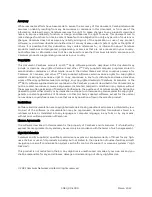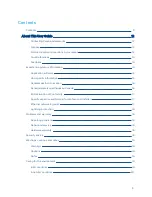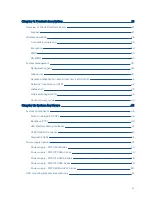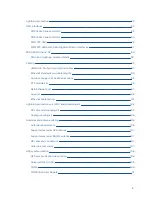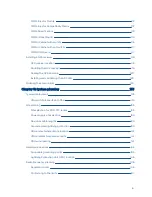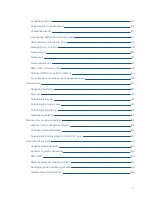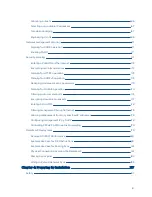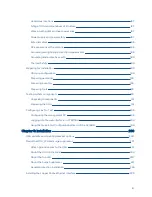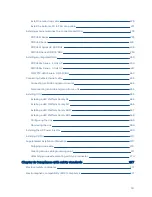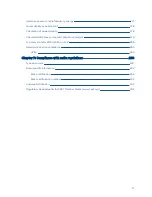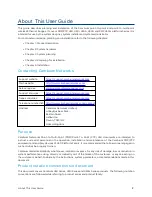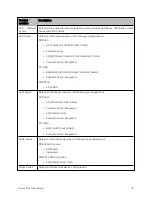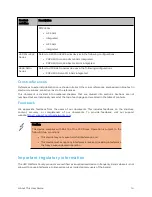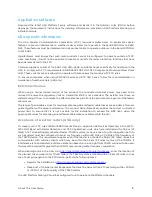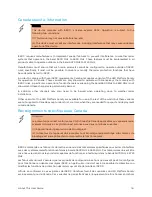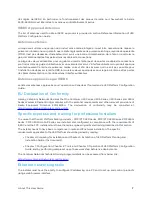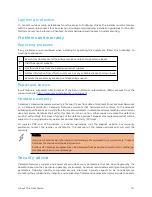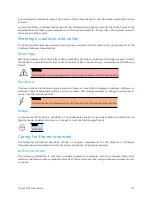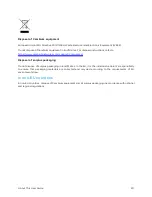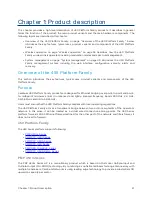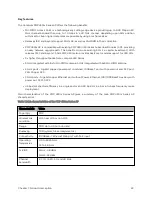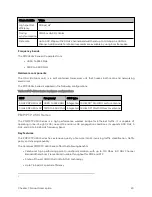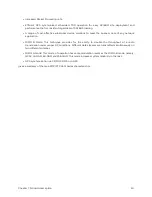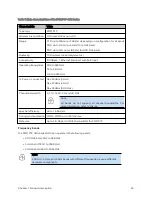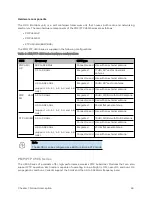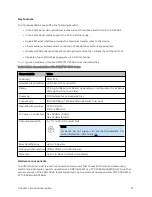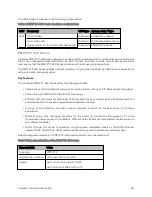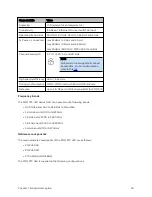
About This User Guide
15
A p p licat ion sof t w ar e
Download the latest 450 Platform Family software and install it in the Outdoor Units (ODUs) before
deploying the equipment. Instructions for installing software are provided in 450 Platform Planning and
Installation Guide.
USA sp ecif ic inf or m at ion
The USA Federal Communications Commission (FCC) requires manufacturers to implement special
features to prevent interference to weather radar systems that operate in the band 5600 MHz to 5650
MHz. These features must be implemented in all products able to operate outdoors in the band 5470 MHz
to 5725 MHz.
Manufacturers must ensure that such radio products cannot be configured to operate outside of FCC
rules; specifically, it must not be possible to disable or modify the radar protection functions that have
been demonstrated to the FCC.
Cambium supplies variants of the 5 GHz 450, 450i, 450b, and 450m Series specifically for operation in the
USA to comply with FCC requirements (KDB 905462 D02 UNII DFS Compliance Procedures New Rules
v02). These variants are only allowed to operate with license keys that comply with FCC rules.
To ensure compliance when using PMP 450 Series and PTP 450 Series, follow the recommendation in
Avoidance of weather radars (USA only).
Ext ernal ant ennas
When using a connectorized version of the product, the conducted transmit power may need to be
reduced to ensure the regulatory limit on transmitter EIRP is not exceeded. The installer must have an
understanding of how to compute the effective antenna gain from the actual antenna gain and the feeder
cable losses.
The range of permissible values for maximum antenna gain and feeder cable losses are included in this user
guide together with a sample calculation. The product GUI automatically applies the correct conducted
power limit to ensure that it is not possible for the installation to exceed the EIRP limit, when the
appropriate values for antenna gain and feeder cable losses are entered into the GUI.
Avoidance of w eat her radars ( USA only)
To comply with FCC rules (KDB 443999: Interim Plans to Approve UNII Devices Operating in the 5470 -
5725 MHz Band with Radar Detection and DFS Capabilities), units which are installed within 35 km (22
miles) of a Terminal Doppler Weather Radar (TDWR) system (or have a line of sight propagation path to
such a system) must be configured to avoid any frequency 30 MHz or –30 MHz of the frequency of
the TDWR device. This requirement applies even if the master is outside the 35 km (22 miles) radius but
communicates with outdoor clients which may be within the 35 km (22 miles) radius of the TDWRs. If
interference is not eliminated, a distance limitation based on line-of-sight from TDWR will need to be used.
Devices with bandwidths greater than 20 MHz may require greater frequency separation.
When planning a link in the USA, visit
http://spectrumbridge.com/udia/home.aspx
, enter the location of
the planned link and search for TDWR radars. If a TDWR system is located within 35 km (22 miles) or has
line of sight propagation to the PTP device, perform the following tasks:
l
Register the installation on
http://spectrumbridge.com/udia/home.aspx
.
l
Make a list of channel center frequencies that must be barred, that is, those falling 30 MHz
or –30 MHz of the frequency of the TDWR radars.
The 450 Platform Family AP must be configured to not operate on the affected channels.
Summary of Contents for PMP 450 Series
Page 92: ...Chapter 2 System hardware 92 Figure 29 MicroPoP Omni antenna implementation pattern Vertical...
Page 134: ...Chapter 3 System planning 134 Figure 51 Mast or tower installation...
Page 135: ...Chapter 3 System planning 135 Figure 52 Wall installation...
Page 136: ...Chapter 3 System planning 136 Figure 53 Roof installation...
Page 137: ...Chapter 3 System planning 137 Figure 54 GPS receiver wall installation...
Page 158: ...Chapter 3 System planning 158 Figure 61 cnMedusa Antenna...


